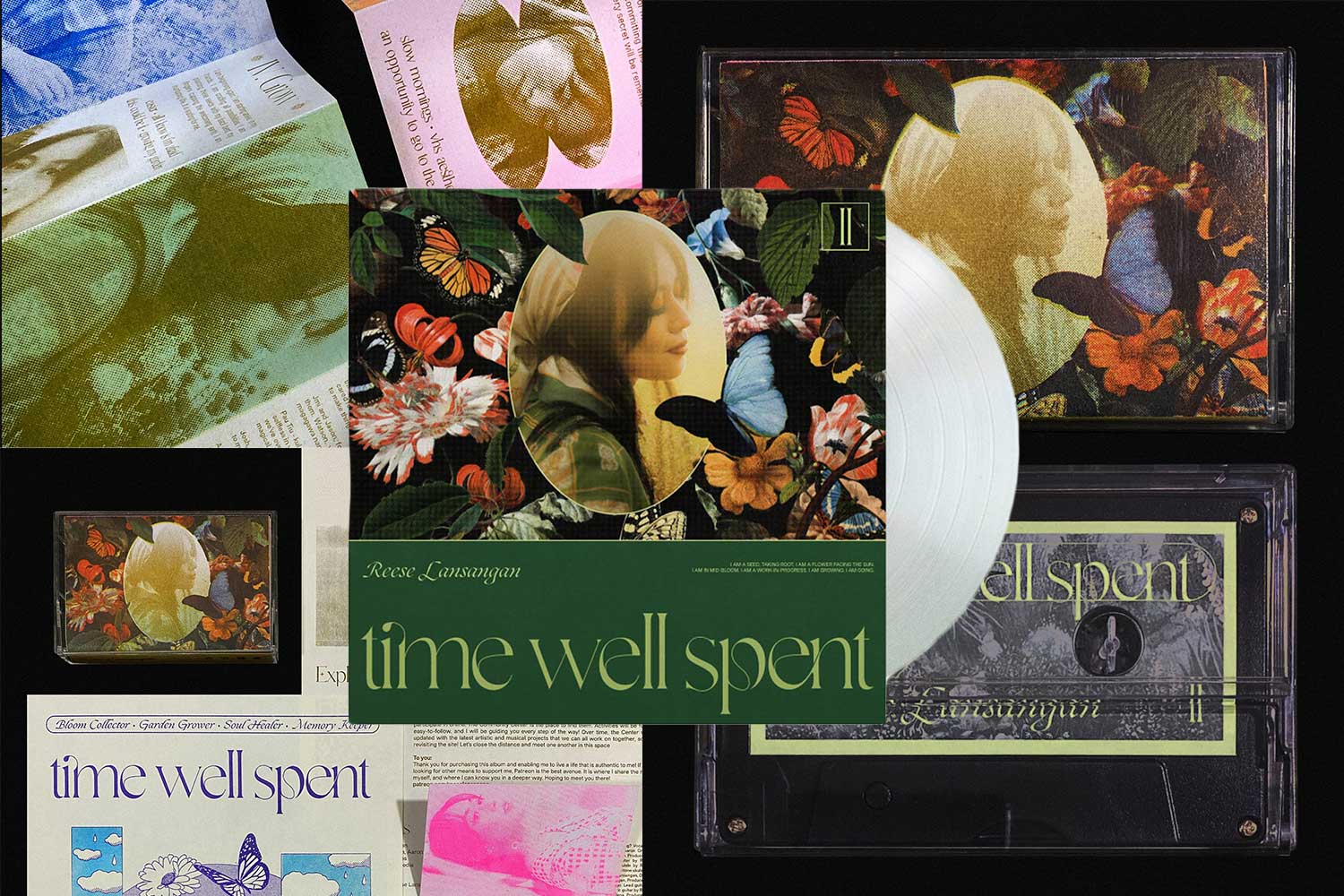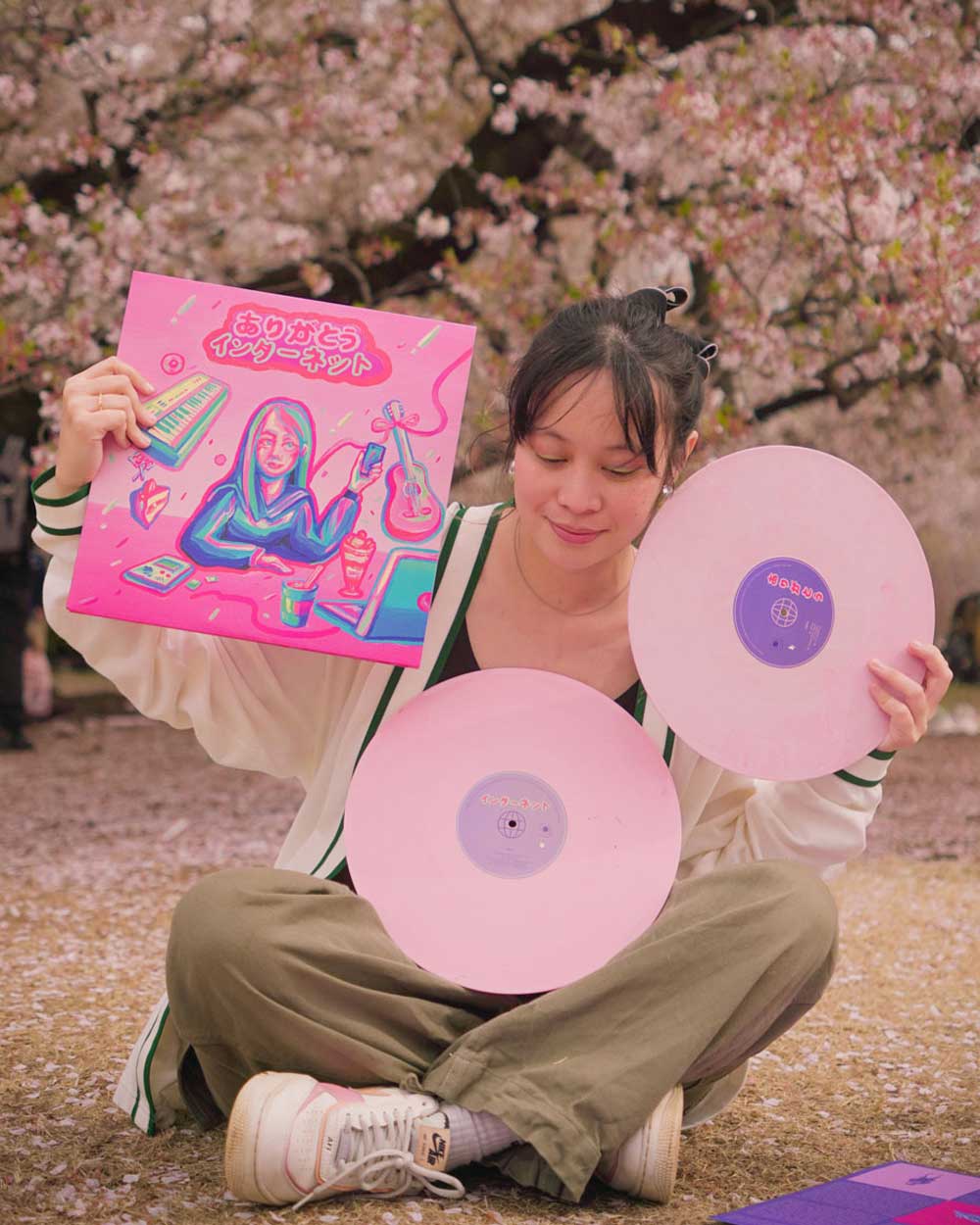There was once a time when almost every Filipino artist had their music on physical media.
Of course, this was before the age of streaming –– wherein record bars like AstroVision, Odyssey, and Tower Records were beloved spaces in malls all over the country. With almost every album release, people would flock to those stores to grab themselves a copy of the latest Bamboo album on CD, or even that of Regine Velasquez on vinyl. Yet as the sun began to shine on platforms like Spotify and Apple Music, the light slowly faded on stores like these. Streaming offered listeners convenience at a cheaper price. Hence, the majority of the local record labels eventually abandoned their production of releases on any physical medium.
But over the past few years, the demand has steadily risen once more due to trends that have been taking the world by storm. A global resurgence of appreciation for physical media, once deemed a relic of the past, began to take root. Vinyl sales soared to unexpected heights over the past decade, cassette tapes experienced a nostalgic revival, and collectors avidly pursued limited edition CDs. So as anyone might wonder –– what sparked this renaissance, and should Philippine record labels, tethered to the dynamic currents of the music industry, consider investing once again in the production of physical media for their artists?

Diego Mapa courtesy of @ukayslut
Billboard Philippines talks to musician and record store owner Diego Mapa as we delve into the nuanced evolution of music consumption. We explore the bygone era when record stores were sanctuaries for audiophiles, the seismic shift brought about by streaming, and the unexpected rekindling of interest in physical media.
As the global pendulum swings back towards the tangible, we ponder whether the Philippines, with its rich musical catalog, should ride the wave of this resurgence and reimagine the role of physical formats in the modern age of music.
What Makes Physical Media So Special?
Recent data from 2023 shows that a significant portion of those who buy physical media don’t even have means to play their records. These collectors, both young and old, still buy vinyl, CDs, and cassette tapes just because they feel a ‘tangible’ nature to it; it’s about seeing and touching the music they like, as much as it is about listening.
The majority of modern physical media releases today include many additional items that go beyond the music, increasing the value proposition that appeals to potential buyers. “[Of course], any additional inserts, liner notes, gatefold pressings, colored vinyl, bonus tracks, and even a free t-shirt could help in product sales,” Mapa notes how these extra incentives always serve as a plus in the marketing aspect, given that it could increase interest for OPM releases if applied locally.

As exemplified by the highly popular K-pop releases, the majority of their physical releases include deluxe (and innovative) packaging styles that include a variety of goodies such as booklets, photo cards, stickers, and fold-out posters in addition to the CDs or records being sold. From what was found by a recent study on Filipino consumer behaviors, the Philippines stands as one of the biggest purchasers of these forms of physical media –– regardless of the high product prices that go against the customer’s intent.
As Mapa puts it, “Local record labels can learn a lot from successful international acts. They’re probably very attentive with the ways of how western labels execute their promotional strategies and physical sales –– or they must be.”
The Current State of Physical Media In The Philippines
Currently, both Viva Records and PolyEast Records are two of the only record labels that actively produce physical media themselves. With their recent reissues to the older catalogs of acts like VST & Company, Asin, Sampaguita, The Dawn, Freddie Aguilar, and Rico J. Puno, these labels have managed to revive an interest in the classic albums from the past –– which has also introduced these albums to new audiences from different generations.
Nostalgia plays a part in this resurgence as well, as Mapa mentions how its impact has made a significant impression on the mindset of potential buyers. “For sure, nostalgia is a big part of music, and record labels should be able to support our senior or legacy artists,” he says. Yet with how these older records have found new life (both with older audiences and new ones), Mapa emphasizes that it’s a good thing, because now, “Their tracks can be hits forever.”

But aside from those two powerhouse labels, several independent artists release their projects on physical media –– though with the restriction of only producing a limited amount of quantities in their initial run.
From fifty, to one hundred, to five hundred copies, it’s not easy for independent artists to gauge the demand of their fanbase. “I guess it [really] depends on the artist. If the artist’s fanbase is comprised of CD collectors, then I think the record label should invest in CDs. But if the artist loves the vinyl format, then perhaps it could work for them,” says Mapa.

He emphasizes the recent trend of these artists investing in cassette tapes, a cheaper analog solution to vinyl. Mapa notes, “It goes well by promoting their music, and as anyone can see, there are lo-fi hip-hop and shoegaze artists who make cassettes because it fits very well with their aesthetic.”
Recently, local record stores like Backspacer Records and The Grey Market Records have begun to partner up with labels to help them produce physical media formats for their artists. Warner Music Philippines, UMG Philippines, and Star Music have partnered up with these stores to produce limited-edition releases for artists like Urbandub, Zack Tabudlo, and Wolfgang. As it stands, all these releases sold out in a near instant –– even fetching prices that go more than double their retail prices.

So what exactly is stopping other record labels from producing more, or even doing the process themselves?
Why Are Labels Not Doing More Physical Releases?
Firstly, there’s a notable absence of vinyl pressing plants and CD factories in the Philippines.
The last-known pressing plants in the country were active only up until the late ’90s, while the factories that made CDs halted production well into the mid-2010s. It’s become a known fact that the majority of physical media releases sold here are imported from other countries –– such as the USA, Europe, and Japan –– given that mass production for the international music scene also often happens there.
Though this exempts the Philippines from the supposed environmental burden that these production factories have, the cost of production isn’t necessarily cheap. When comparing it to just uploading music digitally, there is notably less manpower involved and less of a carbon footprint in terms of executing releases in such a manner. Mapa brings up the necessary question though: “Isn’t storage for huge amounts of digital files just as hazardous?”
As of late, it’s also worth noting that the physical media industry has made numerous innovations to utilize more environment-friendly methods, especially in their use of recycled materials and plastic as part of the production process. However, these are still often produced abroad and are then exported here, which in itself is an expensive process. The shipping fees and customs charges can often cost as much as the records and CDs themselves, which also contributes to pollution and environmental harm.

Diego Mapa courtesy of @ukayslut
Another factor that comes into play would be the prevalence of streaming platforms. At the mere price of Php 149 per month for a subscription (in the Philippines) –– it comprises just a quarter of the price of one CD in comparison to a near-limitless amount of access to any album on most streaming platforms’ libraries.
Not only that, but it’s almost always readily on hand to anyone who has a stable network connection, so listeners don’t have to go out and make the commute to a record shop or scour the net to find the album they want. Because of streaming’s accessibility, who even needs to make the effort?
And that’s exactly the sad truth that Mapa points out. “Convincing the fan [of any artist] to buy a physical [album] has always been a challenge,” he states, especially when considering the price point. He elaborates on this point, stating that; “I believe vinyl is still not for everyone, as I know people who don’t care about it.” In the same vein as those who are avid sneakerheads or toy and comic collectors, Mapa believes that those who are willing to spend on such forms of entertainment are either hobbyists, music collectors, or fanatics.
Why Physical Media Needs To Come Back Locally
Yet no matter the demand from the mass audience or the financial factors Philippine record labels should consider, it’s an undeniable fact that physical media still means a significant deal for the true fans and the artists themselves. “For the true fan of an artist, it is way more fulfilling to own an original physical copy created by the artist — whether it’s vinyl, CD, cassette, or any form of merchandise,” Mapa states.
He elaborates further on this, stating how there is a more personal touch in buying music in physical formats, especially as it exemplifies a tremendous amount of support for the craft of any artist. And even aside from that, it’s also worth noting how the sound quality of CDs and vinyl sounds much better than what we hear in streaming.

Mapa makes the point: “Physical formats offer that tangible experience of ownership [to these albums], unlike looking at [just] a Spotify visualizer.” Unlike these subscription services that lend access to subscribers up until the moment you decide to unsubscribe, buying these physical formats gives you a lifetime of access to the music – which in itself becomes a long-term investment for the future.
Speaking on the future of the phenomenon, Mapa touches upon the thought, saying “In the long run, I think there will always be artists investing in physical formats, whether they are going to be backed up by the record labels or not.” As it stands, projections for 2024 and onwards predict that the demand is going to be even bigger than before –– with the Philippines being one of the leading regions in the Asia-Pacific at the forefront of the vinyl records market and demand.

Reese Lansangan courtesy of @reeseypeasy
For sure, this is just the beginning of more changes to come in the industry and hopefully, Philippine record labels can take note that these things do matter, and can serve as a wise investment for them and their artists –– as long as it’s well-thought-out for all parties involved.
Ultimately, having music on the physical medium matters a big deal to the musicians themselves. And as Mapa sees it, “It’s very satisfying for any artist to create music in this medium. It’s just like a book to a writer, or a film to a filmmaker.”
